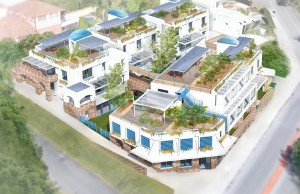Wise Earth has recently developed an R&D demo building operation; WEBS (Wise Earth Building Solutions). This system will be used on Wise Earth’s associated company’s developments and will integrate the many innovative concepts and cutting edge approaches including MassWall; Solar hot water and air conditioning and PV power systems.
With WEBS, Wise Earth should be able to monitor and improve by demonstration, the building operations that build project style homes. The consumer will get all these benefits from architectural design by Ecotect architects to build a superior house suited to the 21st century with solar solutions that are cost effective with a competitive price. It will also provide an alternative choice with state of the art technology to the ‘business as usual’ model that to date has been the only choice.
It’s foreseen that WEBS may be serving the consumer for some time before the generic home building and spec home suppliers embrace the new technologies.
Cutting Edge Research
WEBS will also integrate cutting edge research from Universities and research establishments such as CUSP from Curtin University and engineering faculties in NSW and SA. Any new ideas that can be supplied in solar energy making systems more efficient; Wise Earth will strive to be a change agent in the field of construction. Garry Baverstock remarked that the Swanbourne Village Trust (SVT) project may be ideal to use the concepts behind WEBS.

The Swanbourne Village Trust development is considered to be an ideal project to put into practice the WEBS innovative concept incorporating state of the art technology
As there is a need for an estimated 800,000 new homes to be built in Perth over the next 20-30 years as the city grows to its planning potential; increased density by smart infill development has to be palatable to the public and for desirable economic outcomes.
As first steps for WEBS, perhaps a demonstration home may need to be built parallel to the SVT development on a single block. This will demonstrate how homeowners can subdivide and put an extra house over a period of time increasing density around shopping centres and transport nodes. Melbourne has succeeded in this field of higher density near transport nodes with a smaller footprint than Perth saving taxpayer funds as well as benefits to the environment and to amenities such as Schools and hospitals.
Photo Credits: Nick Melidonis, www.nickmelidonis.com






